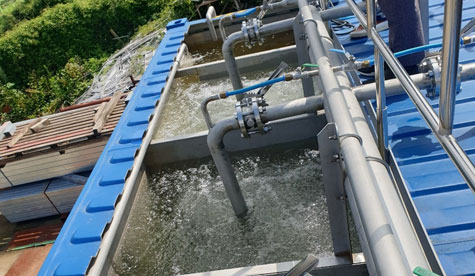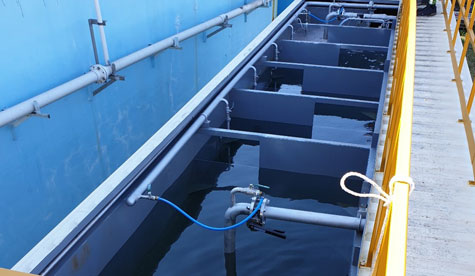Scale of wastewater treatment plant in Korea
Treatment plant
more than 50,000 tons
more than 50,000 tons
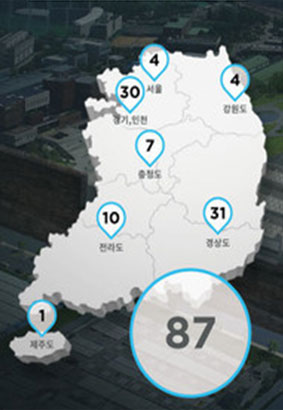
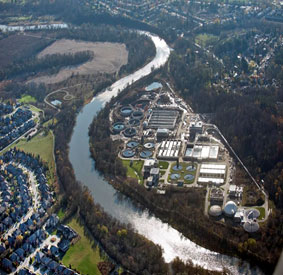
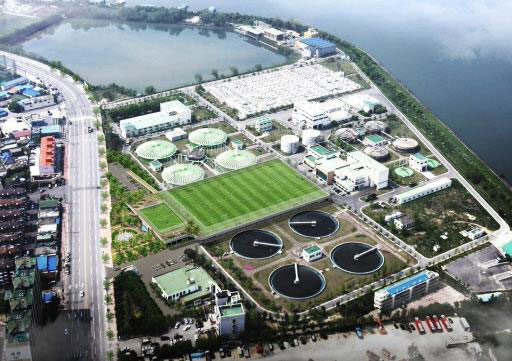
CC : Korea Environment Corporation data(2020)
Public treatment plant
about 4,494 places
about 4,494 places
Site size
about 1,803 ㎢
about 1,803 ㎢
Similar to the size of
JEJU island
JEJU island
Biological Treatment
Occupying 94% of Whole Treatment Plant
Used for over 100 years, since 1914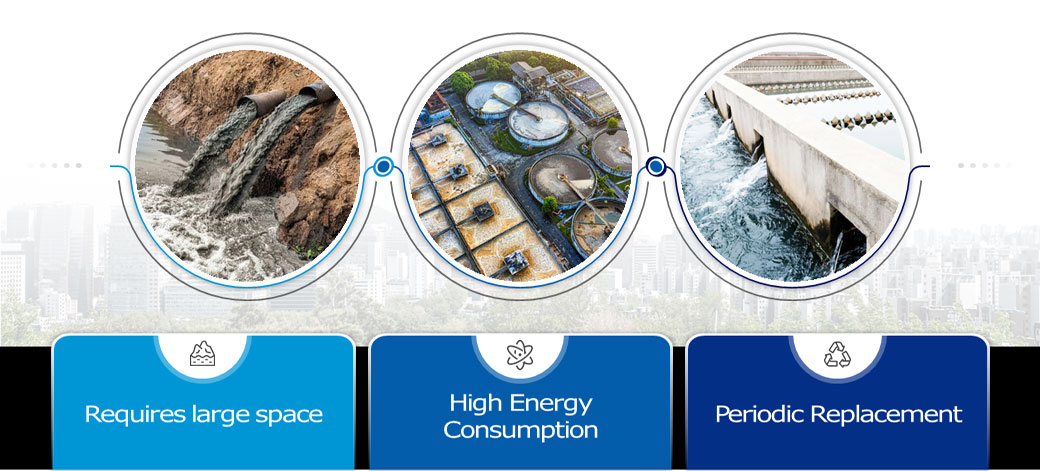
Requires large space
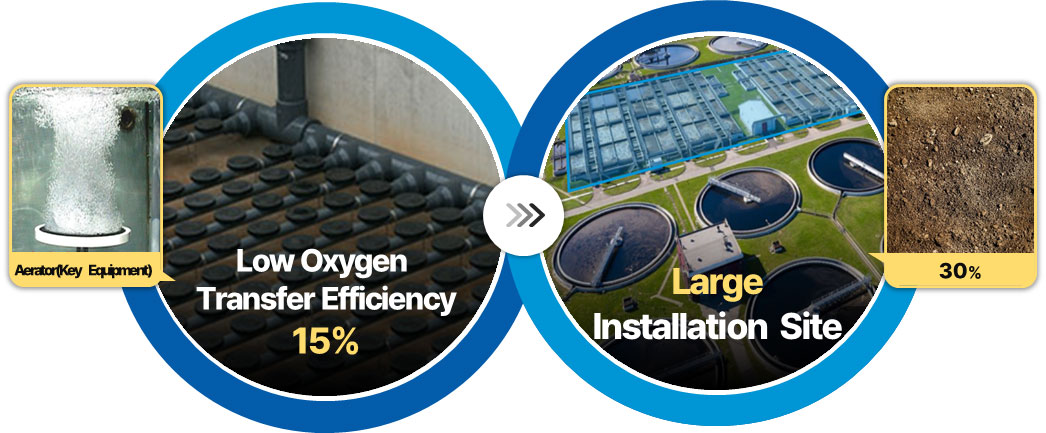
Demand for Undergroundization

Undergroudization prefer smaller sites
(business feasibility)
But, small sites can’t afford original throughput
Excessive electricity use
Energy costs of biological treatment is predicted to increase
due to the rise of the cost of electricity
due to the rise of the cost of electricity
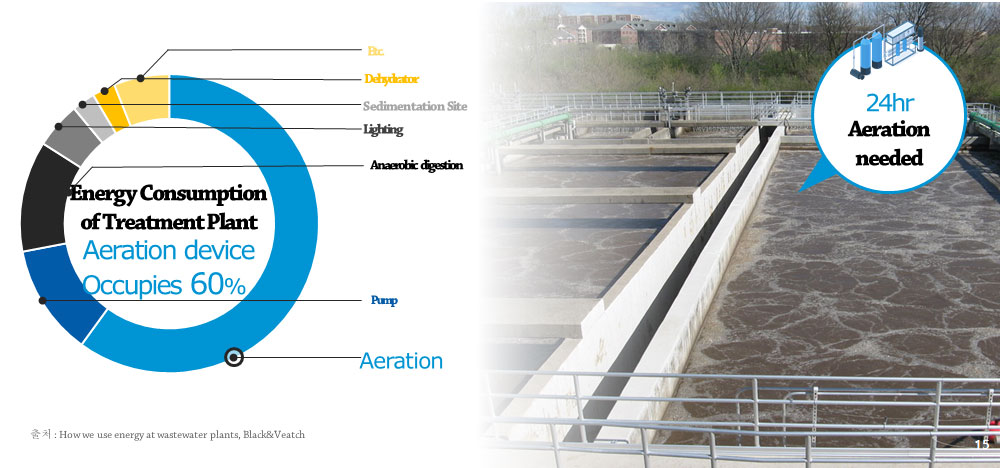
Motivation of development
Aerator replacement
once per 1~5 years
once per 1~5 years
Aerator replacement cost
$150,000 per tank
$150,000 per tank
Stopping of Process, Emptying tank
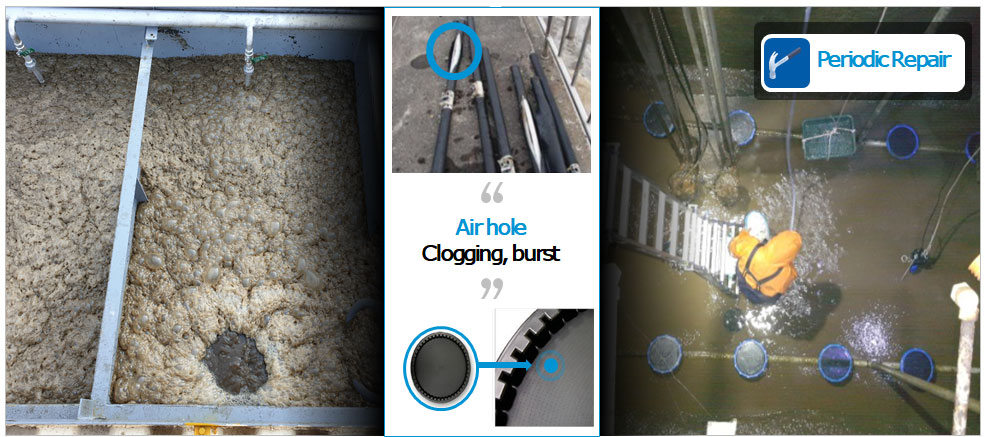
Natural dissolution/ Large sites / Excessive energy consumption / Blockage, burst -> periodic replacement
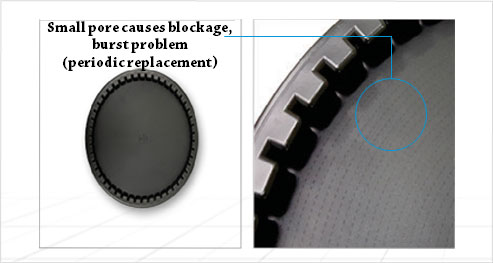
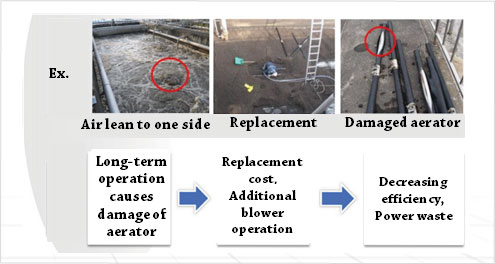
Aerator that solving all the exsting problem
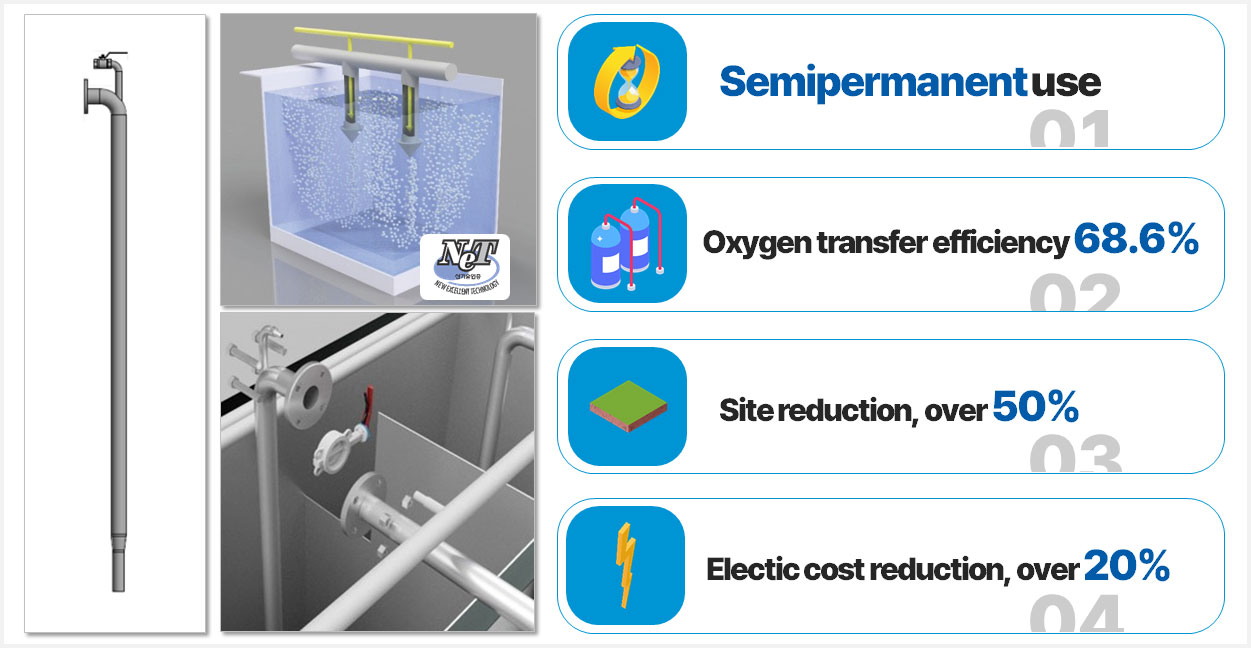
With 5m deep aeration tank
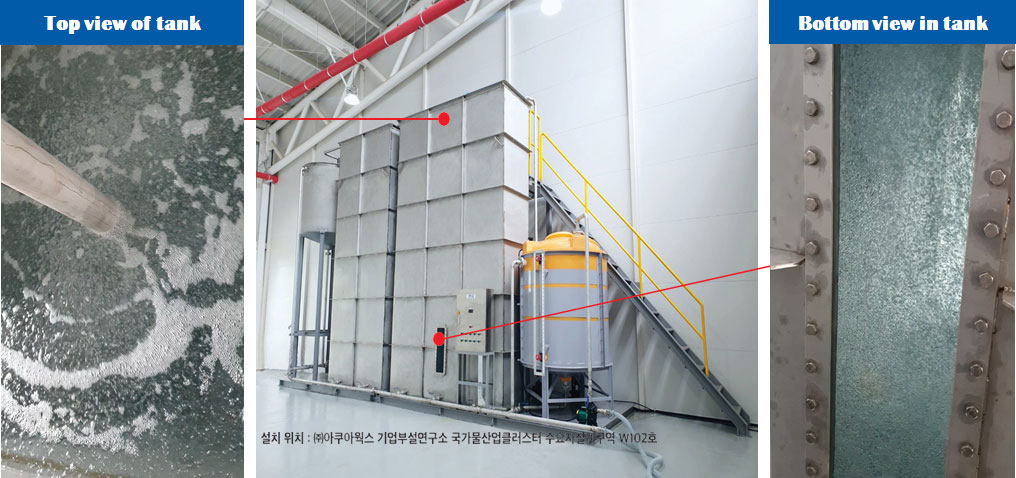
Characteristics
Easy to installation/maintenance without process stop
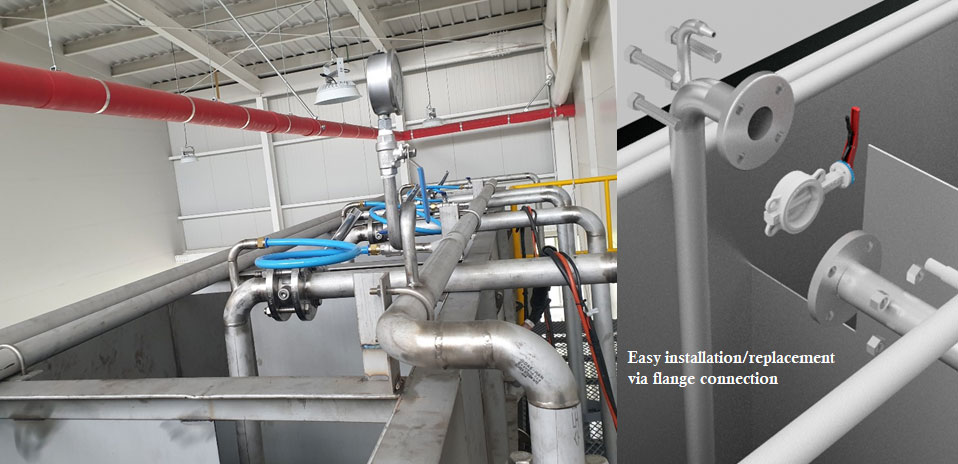
Visuable difference about bubble size

Advantages of ESA application

ESA bubbles
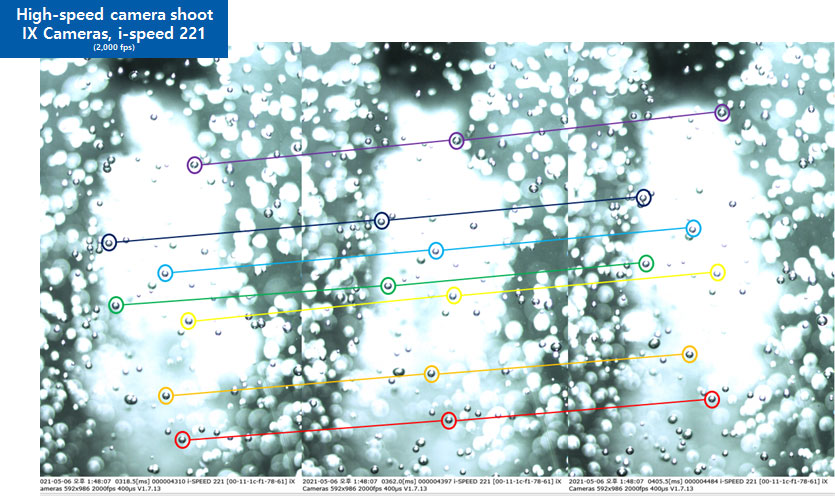
Characteristics of bubbles
ESA bubble has 2.3 times larger in surface area than membranes
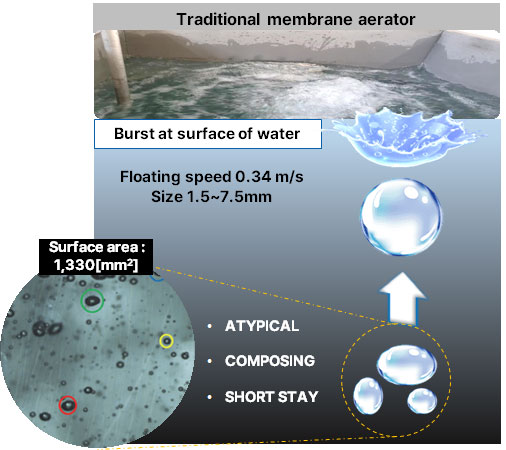
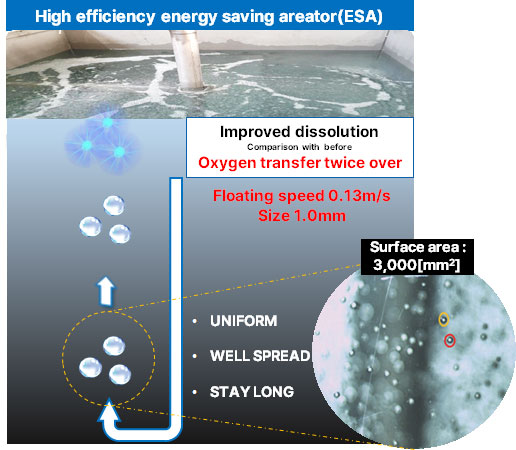
Comparison with before

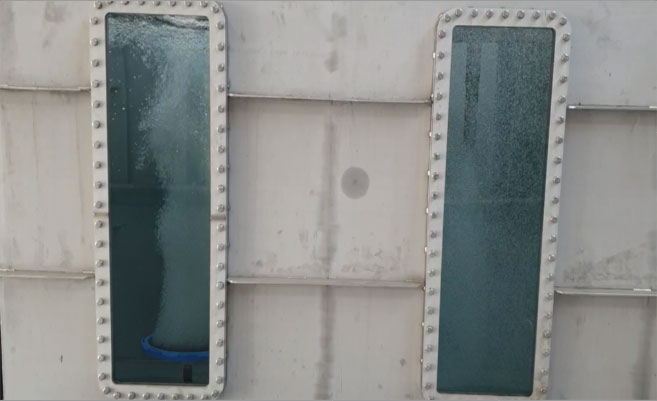
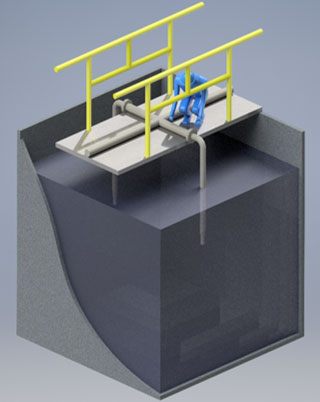
| Category | Membrane aerator |
| Oxygen transfer | 15% |
| Material | EPDM, periodic replacement (1 ~ 5 year) |
| Replacement | Need to stop process/ Work in closed space |
| Bubble size | 1.5~7.5 [mm] |
| Accident risk | High risk of accidents |
| High efficiency Energy Saving Aerator(ESA) |
| 68.6% (KTR) |
| STS304, Semi-permanent |
| No process stop/ no closed space work |
| 1 [mm], uniform |
| Low risk of accidents |
New Excellent Technology (NET) certification

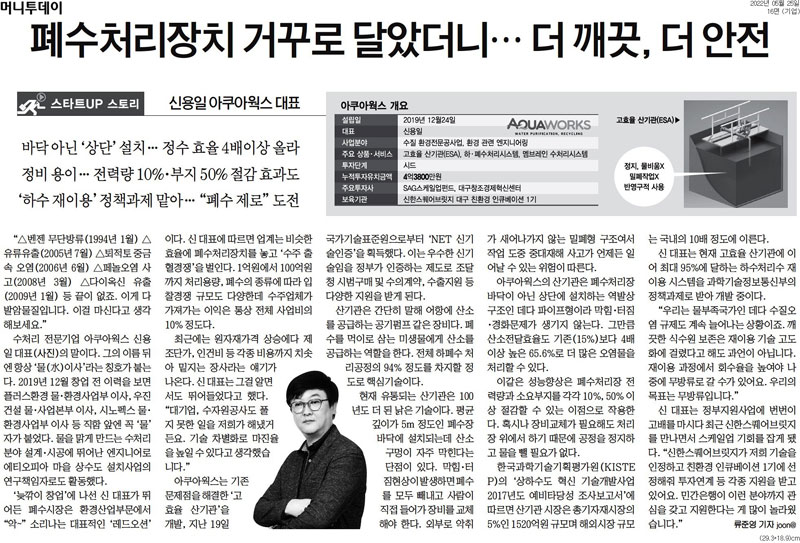
The press articles
about Aquaworks acquiring
New Excellent Technology certificate
Mobile container type test facilities with ESA

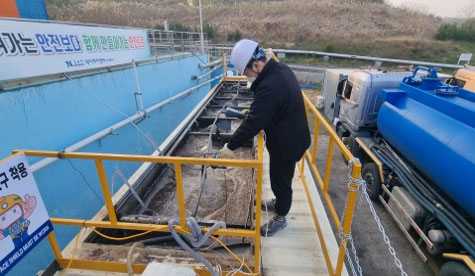
ESA can applicable to biological treatment processes of various wastewater
(livestock, leachate, paper-pulp wastewater or other high concentrated wastewater)
(livestock, leachate, paper-pulp wastewater or other high concentrated wastewater)
